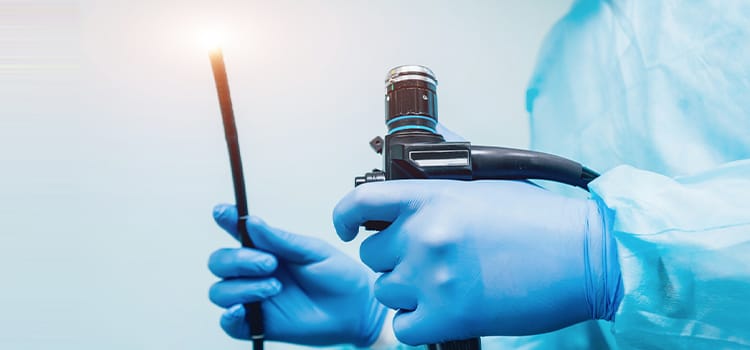Upper Endoscopy

What Is Upper Endoscopy?
Upper endoscopy is a procedure which enables the direct visualization of the lining of the upper part of your gastrointestinal tract, which includes the esophagus, stomach and duodenum (first portion of the small intestine). During this procedure, a thin, flexible tube called an endoscope, which has its own lens and light source, is passed through the mouth and advanced to the beginning of the small intestine
Why Is Upper Endoscopy Done?
Upper endoscopy assists the doctor in evaluating symptoms of persistent upper abdominal pain, nausea, vomiting or difficulty swallowing. It’s an excellent test for finding the cause of bleeding from the upper gastrointestinal tract. It is more accurate than X-ray films for detecting inflammation, ulcers and tumors of the esophagus, stomach and duodenum.
A biopsy (small tissue samples) is often obtained during an upper endoscopy. A biopsy can distinguish between benign and malignant (cancerous) tissues, can detect the presence of Helicobacter pylori (a bacterium associated with most ulcers) and can detect Barrett’s esophagus (a potential precursor to esophageal cancer).
Upper endoscopy is also used to treat conditions of the upper gastrointestinal tract such as bleeding and to dilate strictures (narrowed areas).
How Should I Prepare for the Procedure?
An empty stomach is essential for an accurate and safe examination, so you should have nothing to eat or drink, including water, for approximately eight hours before the examination.
What Can I Expect during Upper Endoscopy?
Your anesthesiologist will administer a short acting intravenous sedative and will be present to monitor your vital signs during the procedure. You will not experience any sensation of gagging or choking. A mouthpiece will be placed between your teeth to keep your mouth open and to prevent injury. You will lie on your left side, and the endoscope will be passed through your mouth and into the esophagus, stomach and duodenum. The endoscope does not interfere with your breathing. The examination typically lasts 10 minutes.
What Happens after Upper Endoscopy?
You will be monitored until most of the effects of the medication have worn off. Your throat might be a little sore, and you might feel bloated because of air introduced into your stomach during the test. You will be given liquid and a snack before leaving our center. You will be able to eat after your procedure unless you are instructed otherwise. The results of your endoscopy will be discussed with you before you leave. Any biopsy results will be discussed with you by your treating gastroenterologist once they are received (typically within two weeks).
You will not be allowed to drive for 12 hours. You will need to arrange for someone to accompany you home because the sedatives might affect your judgment and reflexes for the rest of the day.
What Are the Possible Complications of Upper Endoscopy?
Although complications are rare, bleeding can occur at a biopsy site or where a polyp was removed. If this occurs, it’s usually minimal and rarely requires follow-up. Other potential risks include a reaction to the sedative used and a perforation (a tear in the gastrointestinal tract lining). It is important to recognize early signs of possible complications. If you have a fever after the test, trouble swallowing or increasing throat, chest or abdominal pain, please contact your physician immediately.
For more information about Liberty Endoscopy Center please call 646.215.2244, or book an online appointment for a consultation at any time.

